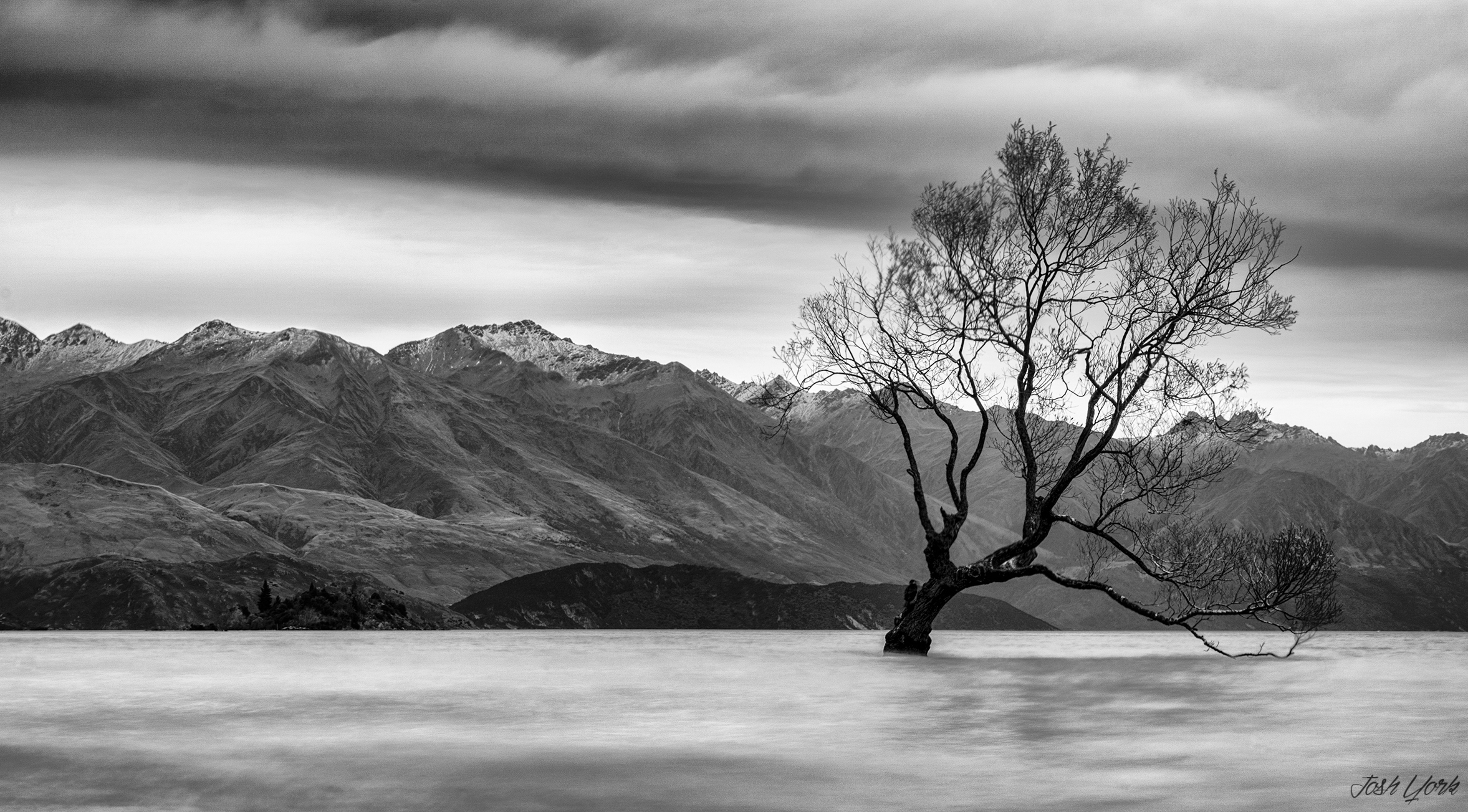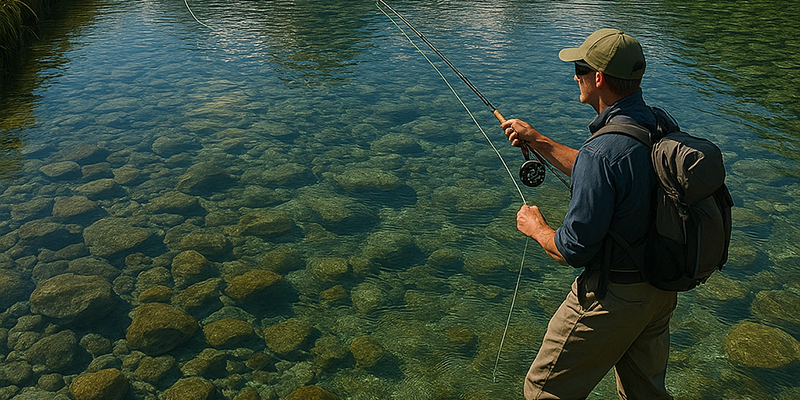For fly fishers across the globe, New Zealand is a name spoken with a certain reverence. It evokes images of stalking enormous, wary brown trout in gin-clear water, of casting a dry fly to a rising rainbow in a pristine backcountry river. This is not just a fishing trip; it is a pilgrimage to the sport’s spiritual home.
But a journey of this magnitude comes with questions. The country is vast, the rules are specific, and the fish are notoriously challenging. This extensive guide is designed to be your trusted resource, providing the practical, on-the-ground knowledge you need to plan a successful and unforgettable angling adventure.
The NZ Fly Fishing Experience: What Makes It Unique?
- It’s a Hunt, Not Just Fishing: The most common technique is “sight-fishing.” This involves walking the riverbank, actively searching for a fish holding in the current, and then planning your stalk and presentation to that specific fish. It’s a challenging and intensely rewarding discipline.
- Wild, Wary Fish: These are not stocked, naive fish. New Zealand’s trout are wild, strong, and have a PhD in telling the difference between a real insect and a poorly presented fly. They will test your skills like few other fish on Earth.
- Incredible Scenery & Solitude: You will be casting in some of the most beautiful landscapes imaginable. Due to the vast amount of water, it’s often possible to fish an entire day without seeing another angler.
Getting Legal: Your Fishing Licence Explained
This is the most important step. Fishing without a licence is illegal and carries heavy penalties. The system is simple and online.
- 1. The Fish & Game Licence: For 99% of the country, you need a licence from Fish & Game New Zealand. They administer all regions except for the Taupō district. You can buy a Non-Resident Licence online for a 24-hour, 3-day, or full-season period.
- 2. The Taupō Fishery Licence: The Lake Taupō catchment area, including the world-famous Tongariro River, is administered by the Department of Conservation (DOC). It requires a separate licence. If you plan to fish here, you will need to purchase a Taupō licence online.
Recommendation: Purchase your licence(s) online before your trip. Print a copy and also save a digital version to your phone.
A Guide to New Zealand’s Premier Fly Fishing Regions
Southland (Lower South Island)
- The Vibe: The holy grail for the brown trout purist. This is a region of lush green farmland, rolling hills, and spring-fed rivers.
- Key Rivers: The Mataura River is world-famous for its incredible “match the hatch” fishing during mayfly season. The Oreti, Aparima, and Waikaia rivers also offer legendary angling.
- Best Time: October-November for early season, and January-March for the terrestrial (cicada and beetle) and mayfly season.
Nelson/Marlborough (Top of the South)
- The Vibe: The ultimate adventure fishing. This region is home to countless backcountry rivers, many of which require a hike, 4WD, or even a helicopter to access.
- Key Rivers: The Wairau, Buller, and Motueka river systems are vast and varied. This is the place to find true wilderness fishing.
- Best Time: The summer months (December-February) are prime time for this region.
Central North Island (Taupō/Turangi)
- The Vibe: The rainbow trout capital of the world. The fishery is based around the massive Lake Taupō and the rivers that feed it.
- Key Rivers: The Tongariro River is the icon, famous for its powerful, silver rainbow trout that run up the river from the lake to spawn.
- Best Time: While open year-round, the main spawning runs provide incredible (and popular) fishing during the winter months (June-September).
The West Coast (South Island)
- The Vibe: Wild, rugged, and remote. This is fishing in a temperate rainforest. The weather can be challenging, but the rewards are solitary, large brown trout.
- Key Rivers: The rivers are too numerous and sensitive to name, but any river flowing out of the Southern Alps offers potential.
- Best Time: Only fishable during the summer and early autumn when rivers are low and clear (December-April).
Gearing Up: Rods, Flies, and CRITICAL Biosecurity Rules
- Rod & Reel: A quality 9-foot, 5-weight or 6-weight rod is the perfect all-rounder for New Zealand.
- Lines: A weight-forward floating line is all you need for 95% of situations. Bring long leaders (12-16 feet) tapered to 4x or 5x tippet.
- Flies: Leave the bright attractor patterns at home. NZ trout respond to natural imitations. Your essential fly box should include:
- Nymphs: Pheasant Tail Nymph, Hare’s Ear Nymph (sizes 12-18).
- Dries: Parachute Adams (12-16), a Cicada pattern (summer), a Manuka Beetle pattern (summer).
- Waders & Boots: Breathable waders are essential. For boots, rubber soles are the standard.
!! BIOSECURITY WARNING: CHECK, CLEAN, DRY !! New Zealand’s rivers are precious and fragile. To prevent the spread of invasive aquatic pests like didymo (‘rock snot’), you must follow the “Check, Clean, Dry” protocol. All your fishing gear (boots, waders, nets, lines) must be thoroughly cleaned and completely dry before entering a different river system. IMPORTANT: Felt-soled wading boots are BANNED in New Zealand. They cannot be decontaminated effectively and you will not be allowed to bring them into the country.
Your Secret Weapon: Why Hiring a Professional Guide is the Smartest Move
For your first trip, hiring a guide for at least your first couple of days is the best investment you can make.
- A good guide doesn’t just find you fish; they collapse a decade of learning into a single day. They will teach you the techniques for sight-fishing, provide the right flies, handle the logistics, and often provide access to private rivers you can’t get to on your own.
Planning a trip centered around the perfect catch?
👉 Need Help Planning Your Trip?
Excursion New Zealand is your ultimate guide to an unforgettable journey. We help you discover top attractions, hidden gems, and local favorites to maximize your New Zealand adventure.
How it works is you enter you starting origin, destination and it will show you an optimized route and any attractions along the way.
From there you can select what attractions you want to see and we provide you with a plan including the travel time required.


